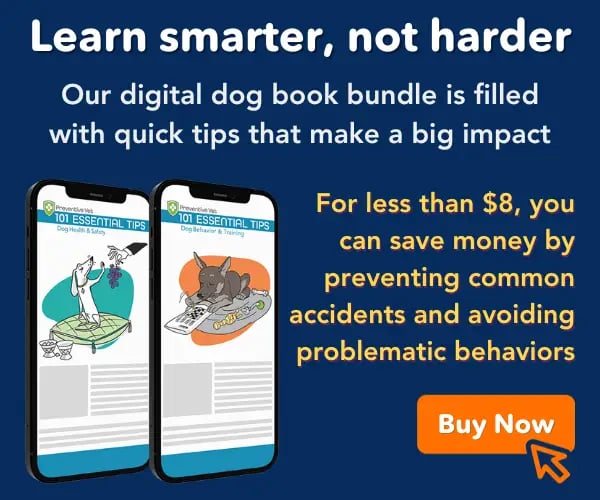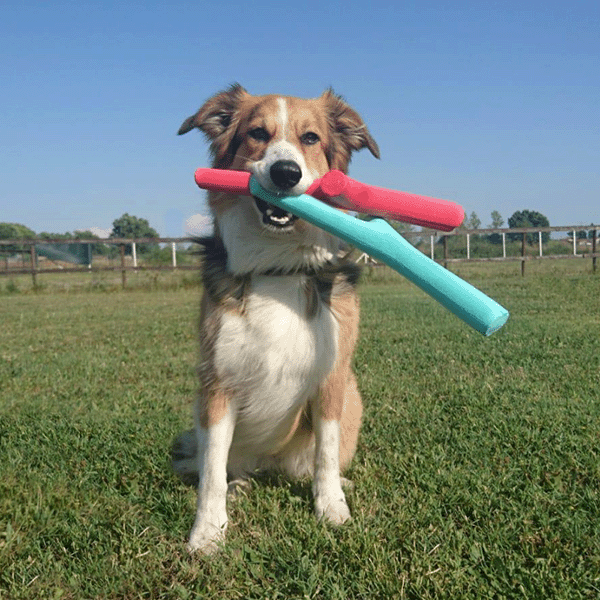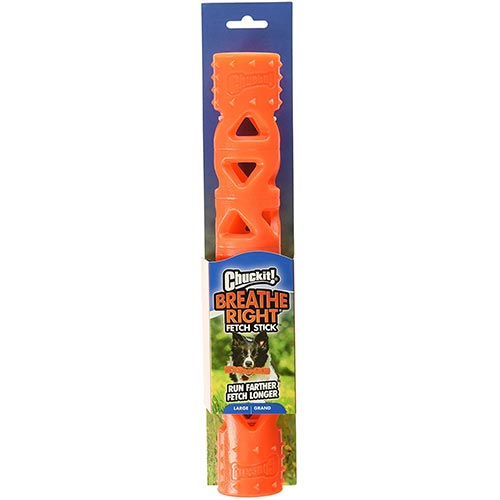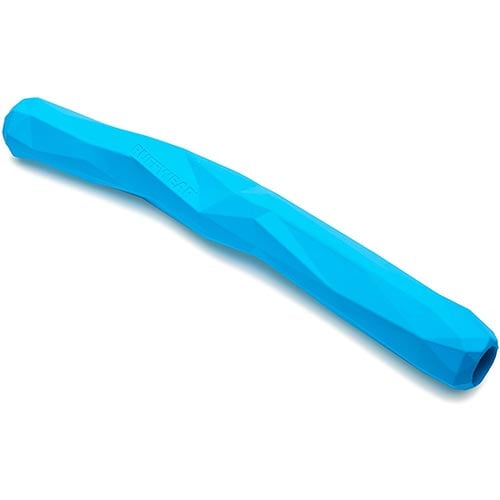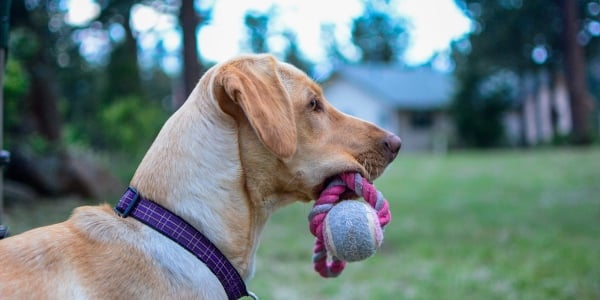 If your dog seems uninterested in the brand new toy you bought them, there are a few things you can do to encourage them to play.
If your dog seems uninterested in the brand new toy you bought them, there are a few things you can do to encourage them to play.
In some cases, a dog might not like certain toys or play, and that's okay!
Other dogs might never have had the opportunity to engage in positive and fun play with toys or with people (especially if they're adopted). No matter your dog's history, personality, or play preferences, you can help them have more fun by teaching them how to play, finding the types of toys they enjoy most, and encouraging lots of goofy fun.
Playing with a dog reduces stress for us humans, but it's also vital for your dog's mental health. Playing together strengthens your bond with your dog and can help with behavior and training issues. Don't despair if your dog doesn't seem interested in toys, fetch, or play! Below are some tips on how to introduce new toys and ways to get your dog interested in playing fetch.
Try Out Different Dog Toys
How to Increase a Dog Toy's Value
Getting Your Dog Interested in Fetch
How to Get Your Dog Interested in Toys
Test Out Different Toys With Your Dog
You want to find out what type of toy your dog most enjoys playing with, and there are lots of different options! Some dogs prefer soft toys over tougher rubber toys, while others love to tug on rope toys or chase bouncy balls. Toy stuffing also can change the play experience for a dog — some toys have a crinkly filling versus squeakers and stuffing, and there are even no-stuffing toys (I like to call these toy "carcasses").
Think about your dog's play style when picking out their toys. If they love to herd and chase, try out toys that are easy to toss or drag. If your dog is a wrestler, consider tougher toys that will hold up to more chewing and pawing. If your pup is a bit more dainty in their play, make sure their toys aren't too heavy or overwhelming for them to interact with.
Because dogs love to chew – they actually need to chew – many toys get chewed on. It can be helpful to know your dog's "chewsonality" when picking their toys. Are they an inhaler, nibbler, or destroyer? My dog used to be a destroyer in her younger days, but with age, she's turned into quite the nibbler. Read more about different dog chewsonalities in our article "How to Choose Safe Dog Chew Toys." If you choose toys that are not good chew toys for your dog's chewsonality but they love playing with it, just bring them out for supervised play or a round of fetch, then put them away.
Do some toy tests with your dog to see what kind of toy they gravitate towards. I like to offer two toy options at a time and then test the "winner" of each round to a different type in the next play session. Look for a toy that's the right size for your dog and easy for them to carry around comfortably.
Here are a few of my favorite toys you can try:
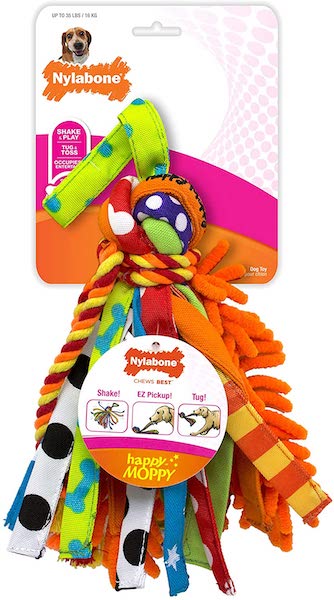
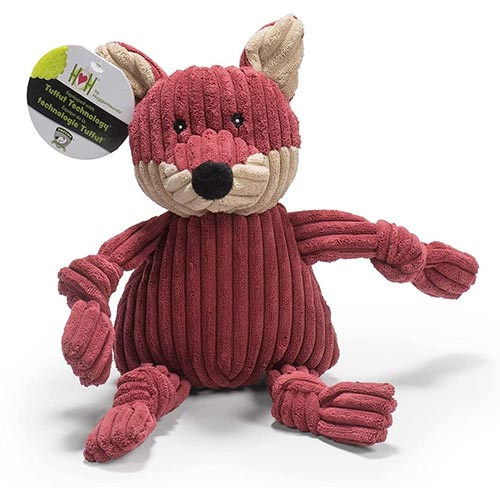
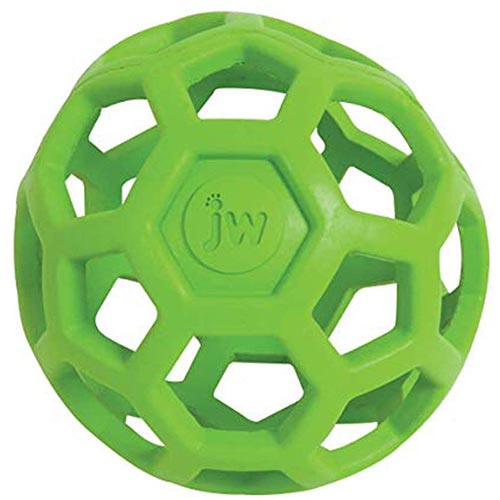
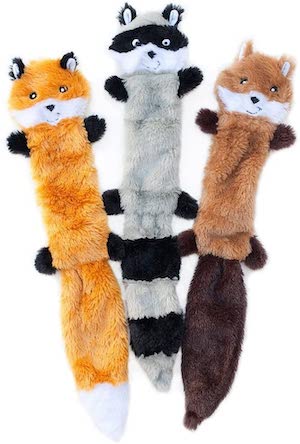
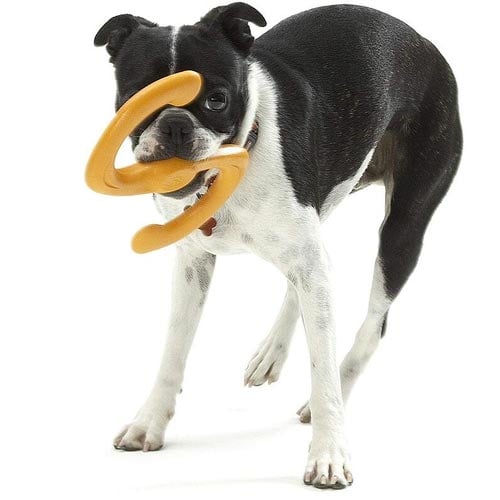
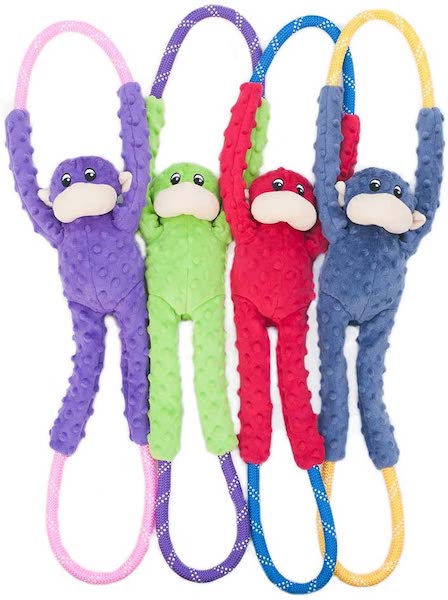
Increase a Dog Toy's Value
One of the joys of sharing life with a dog is that they get excited when we're excited — they're always ready to celebrate whatever it is! You can use this shared excitement to make a specific toy more valuable to your dog. If you act amazed and enthralled with a toy in front of your dog, they're likely to wonder what all the fuss is about and want to check it out too.
Here are a few tips to increase the value of a dog toy:
- Keep the toy stored out of sight when not playing. I like having some toys and chews out and accessible for my dog, but if I want a particular toy to be of higher value, I keep these put-away and only bring them out when I can play with my dog.
If a toy is always available, it can lose value since it's just always there. My dog's tug toys are kept in a basket when we're not playing together, and her fetch stick is stored away. - Act SUPER excited about a toy when you bring it out. Put on your best acting cap for this step! When you bring out a new toy, make a big deal about it. I sound a little bit crazy when I'm introducing a new toy to a dog, asking, "What is it?" in a higher-pitched voice, oohing and aahing over it. I move it around quickly, make it squeak if it has a squeaker, or bounce it around. I might play a little bit of keep-away with my dog to make it seem like a huge win when she does catch the toy.
- Keep play sessions with the toy short. As you build up interest in a new toy, put it away before your dog starts to lose interest in it, or gets distracted by something else. Keeping it "new" keeps it exciting whenever you bring it out to play.
As you build up a toy's value, you can even begin using toys as rewards when training your dog. Being able to use toys as play a reward means that you can fade out food treats in your dog's training even faster. Read more about toy rewards in "How to Use Toys as Rewards in Dog Training."
How to Get Your Dog Interested in Playing Fetch
Some dogs go nuts for fetch (just ask any Retriever owner), while others aren't quite so interested in the whole bringing-the-toy-back part or even running after it in the first place. I've had plenty of tosses where a dog has looked at me incredulously and is most likely thinking, "You threw it; you go get it."
Playing fetch with your dog can be an easy way to burn off their excess energy (without requiring lots of physical exertion from you). Still, it's important to consider whether your dog enjoys fetching before worrying too much about teaching them to play. If they don't want to engage in chasing the toy when you throw, they might enjoy playing tug instead. A great alternative to fetch is playing with a flirt pole or rolling a Jolly Ball around the yard instead.
Keep in mind that fetch can cause a lot of stress on your dog's joints and muscles (due to the sudden braking and turning your dog is doing). It's best to avoid strenuous games of fetch with your dog if they are a young dog that isn't fully grown yet, or they have arthritis or other mobility issues.
Fetch involves a couple of different behaviors chained together:
- chasing a toy (which mimics chasing running prey)
- picking it up (catching the prey)
- returning it to you
It depends on which part of the process that your dog isn't "getting" that determines what you can try to get them more involved in the game.

If Your Dog Doesn't Chase the Fetch Toy
- Try a different style of toy. Some dogs prefer balls over fetch sticks for example, so test out a few toys to see which your dog shows the most interest in chasing in the first place. Drag the toy around and see if they want to chase. Play keep-away for a little bit, giving them little "tastes" of the toy before running away with it again. Let them catch the toy a couple of times and praise them when they do!
- Toss it small distances. Before making your best Super Bowl quarterback impression and lobbing the toy as far as you can, see if your dog will chase it shorter distances first. Encourage the chase with excited praise, such as "get it!"
- Chase after the toy yourself. Often some fun competition is all a dog needs to get into a game of fetch. (Anyone with two dogs at home might understand this very well.) If you act like you're going to get the awesome toy first, many dogs will run with you, and you can get them into the practice of chasing after the fetch toy.
If Your Dog Doesn't Pick Up the Fetch Toy
- Ensure the toy is the right size, weight, and comfortable for your dog to pick up and hold in their mouth. Some materials might not feel all that great for some dogs, such as hard frisbees (which can also cause tooth damage). Check out our Top 10 Picks for Fetch Toys here.
- Train your dog to pick up and hold onto a toy. You can clicker train your dog to pick up and hold something in their mouth. While this is more often used when teaching a formal retrieve for the obedience ring or for working dogs, you can practice this with your dog and give the cue during a game of fetch. To learn how to do this, read through the steps in "Teaching Your Dog to Play Fetch (and Return)."
If Your Dog Doesn't Bring the Fetch Toy Back
- Start with short-distance retrieves. Practice having them bring the toy back, even just a few steps at first. Give them lots of praise and enticing encouragement as they carry the toy, even if it's just a few feet towards you! This is where short throws come in handy as well.
- Focus on a toy trade. Some dogs get so excited about the chase and catching aspects of fetch but totally forget that they need to bring the toy back. One way I like to counteract this is by having two of the same fetch toy. They don't get the other toy thrown until they bring the first toy back to me.
For dogs less motivated by toys and who will do anything for food, I will reward them with a small training treat when they bring the toy back before tossing it again. (Fetch is a perfect opportunity to practice your dog's drop it cue.)
The more excited and involved you are in fetch with your dog, the more likely they'll be interested in playing. Give them lots of praise and stay engaged with your dog while you play fetch!
Avoid Using Regular Sticks as Your Dog's Fetch Toy
While sticks your dog finds on the ground may be a tempting "toy," natural sticks made by mother nature can cause serious injuries that you want to avoid! Injuries from wooden sticks include:
- Splinters in a dog's tongue and/or gums
- Punctures of the roof of a dog's mouth or even their throat
- Impalement in a dog's eye
- Penetration of a dog's chest, with resulting damage to their heart and/or lungs
Learn more about the dangers of wooden sticks in "Why Sticks Are Not 'Free' Toys for Dogs."
While your dog might prefer wooden sticks to other fetch toys, invest time in building value in alternatives to keep them safe and healthy. After introducing my dog to her Best Fetch Stick and making it more fun and exciting than grabbing twigs, she now ignores any sticks while at the park. It helps that her fetch stick toy bounces and is a brighter color than regular sticks, making it easier for her to see and more exciting to chase. This may take time and patience, and while you work on it, stay away from areas where your dog might find wood sticks around for the taking. Practicing your dog's leave it and drop it cue can help you manage any stick-grabbing behavior.
Here are some great toy alternatives to sticks you can try with your dog:
Play With Your Dog!
Getting your dog interested in toys or playing fetch means you'll have the opportunity to engage in play with them — something both humans and dogs need and enjoy! Playing relieves stress and strengthens the bond we share with our dogs. Humans and dogs are two species that tend to enjoy playing into adulthood, and I know that playing with my dog brings out my silly side and helps me let go of day-to-day stress.
If your dog seems wary of play or even scared of certain toys or games, it will help to connect with a certified dog trainer who can help you build their confidence. Some dogs have had no experience playing with humans in the past or might have had negative experiences. With patience, compassion, and time, they can learn to play. It's just figuring out what toys and games they most enjoy!


